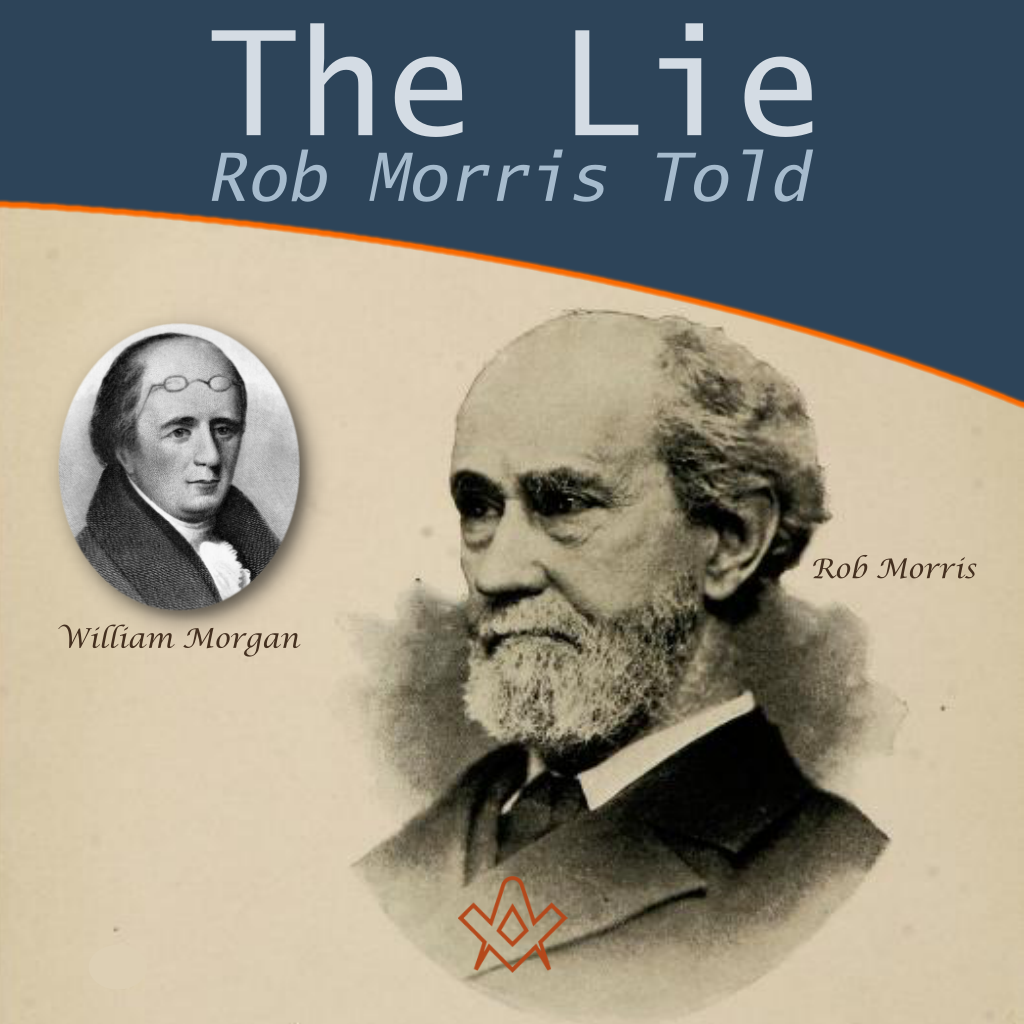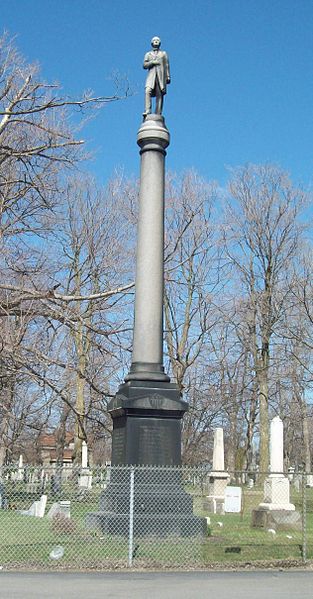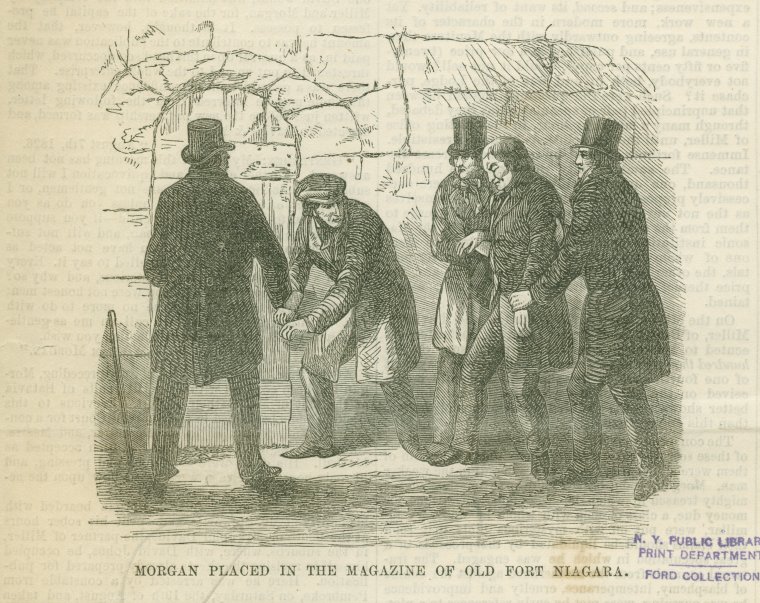In September of 1882, the National Christian Association unveiled a 35-foot monument to William Morgan in a cemetery in Batavia, New York, unveiling a new round of anti-Masonic feelings in the process.
It had been more than a half century since William Morgan had vanished from the village, kidnapped and murdered, it was said, by members of the Masonic fraternity who were outraged that a man they had welcomed as a brother had betrayed them by exposing their mysteries to profane eyes.
Yet the murder of William Morgan was never proven; the discovery of a body on the shores of Oak Orchard Creek a year after his disappearance, at first supposed to be that of William Morgan was just as quickly supposed to be that of Timothy Monro, a Canadian who had drowned a few weeks before the discovery.
Therefore, the matter was brought to a close; no corpse, no crime.
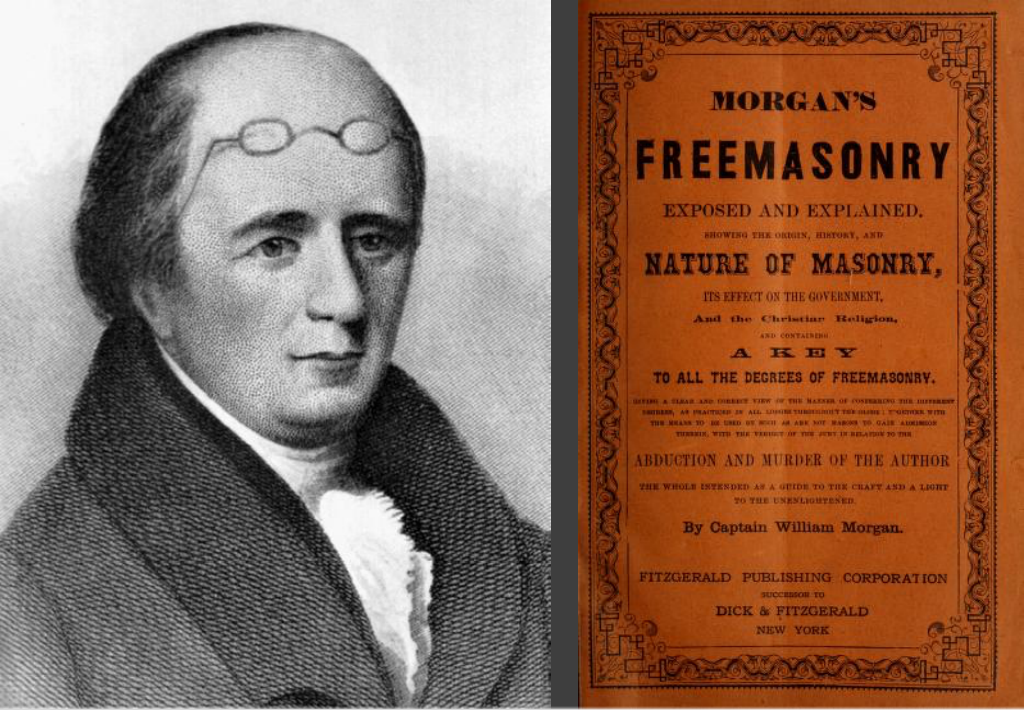
William Morgan (1774 – c.1826) / Morgan’s Freemasonry Exposed
IMAGE LINKED: wikimedia Attribution 4.0 International (CC BY 4.0)
[For readers unfamiliar with the Morgan affair, a summary of the account is published here- Source: Wikipedia ]
The 38-foot high monument to William Morgan in Batavia Cemetery, New York. – By Pubdog Own work, Public Domain
IMAGE LINKED: wikimedia Attribution 4.0 International (CC BY 4.0)
However, five years of legal investigation and prosecution on the matter of Morgan’s disappearance had resulted in 20 grand juries and 15 trials.
Of the 54 Freemasons indicted by the grand jury, only 39 came to trial and only 10 convicted.
Although the 10 Masons convicted of abducting Morgan served light sentences ranging from one month to 28 months, the Craft as a whole served a nearly two-decade-long backlash against the Craft that punished all Freemasonry for the actions of a few of its misguided members.
Yet, Freemasonry survived and grew in the years after the American Civil War; her opponents less vocal than they had been when anti-Masonry had passed through the churches on its journey from the honest indignation of the citizens of Western New York to the political machinations of the Anti-Masonic Party, a party led by men like Thurlow Weed.

Thurlow Weed, newspaper editor and leader of the Anti-Masonic Party By Mathew Brady – Library of Congress Prints and Photographs Division. Brady-Handy Photograph Collection. CALL NUMBER: LC-BH82- 4505 A , Public Domain,
IMAGE LINKED: wikimedia Attribution 4.0 International (CC BY 4.0)
Weed was a Rochester newspaperman and editor of the Rochester Daily Telegraph when Morgan was abducted and soon took an active interest in the investigations.
Although publicly humiliated and ridiculed for his alleged desecration of Timothy Monro’s corpse in October of 1827 to make it look like Morgan, Weed continued to attack Freemasonry throughout the remainder of his life, launching his final attack at the unveiling of the Morgan monument in 1882, just weeks before his death.
Although he was unable to attend in person, Weed sent a letter to the organisers that told of the confession of John Whitney, one of the men convicted of abducting Morgan, and a man who not only fled to New Orleans to avoid prosecution, but who also refused to testify in one of the later trials.
In Weed’s account of things, in 1831, while visiting in his home, John Whitney confessed to murdering Morgan:
Whitney then related in detail the history of Morgan’s abduction and fate.
The idea of suppressing Morgan’s intended exposure of the secrets of Masonry was first suggested by a man by the name of Johns.
It was discussed in lodges at Batavia, Le Roy and Rochester. Johns suggested that Morgan should be separated from Miller and placed on a farm in Canada West.
For this purpose he was taken to Niagara and placed in the magazine of the Fort until arrangements for settling him in Canada were completed, but the Canadian Masons disappointed them.
After several meetings of the lodge in Canada, opposite Fort Niagara, a refusal to have anything to do with Morgan left his ‘kidnappers’ greatly perplexed.
Opportunely a Royal Arch chapter was installed at Lewiston. The occasion brought a large number of enthusiastic Masons together. ‘After labor’, in Masonic language, they ‘retired to refreshment’.
Under the exhilaration of champagne and other viands the Chaplain (the Rev. F. H. Cummings, of Rochester) was called on for a toast.
He responded with peculiar emphasis and in the language of their ritual: ‘The enemies of our order may they find a grave six feet deep, six feet long, and six feet due east and west.’
Immediately after that toast, which was received with great enthusiasm, Col. William King, an officer in our war of 1812, and then a Member of Assembly from Niagara county, called Whitney of Rochester, Howard of Buffalo, Chubbuck of Lewiston, and Garside of Canada, out of the room and into a carriage furnished by Major Barton.
They were driven to Fort Niagara, repaired to the magazine and informed Morgan that the arrangements for sending him to Canada were completed and that his family would soon follow him.
Morgan received the information cheerfully and walked with supposed friends to the boat, which was rowed to the mouth of the river, where a rope was wound around his body, to each end of which a sinker was attached.
Morgan was then thrown overboard. He grasped the gunwale of the boat convulsively.
Garside, in forcing Morgan to relinquish his hold was severely bitten.
Weed’s version of Whitney’s story was strong evidence against the Masonic fraternity at a time when Freemasonry was once again feeling the pressure of anti-Masonic inquiry.
The letter, published by the National Christian Association in pamphlet form in 1882, also found its way into many New York newspapers.
It is doubtless that few readers, particularly those predisposed to a mistrust of Freemasonry, gave any critical thought to Weed’s claims, accepting the account as a true and accurate depiction of what really happened.
However, the same can be said of the Freemasons who accepted, without question, another version of the Whitney confession, the one offered by the Masonic author Rob Morris.
In 1883, the year after the raising of Morgan’s monument in the Batavia cemetery, Morris, a well-known Masonic poet and author, wrote a book called William Morgan or Political Anti-Masonry, its Rise, Growth and Decadence.
The book presented the argument that Morgan was not abducted and murdered by Freemasons, but deported to Canada at his own request.
It is little surprise that this story was joyfully received by the Masonic fraternity and became the tale that is accepted and repeated by North American Freemasons to this day.

Masonic author Rob Morris, Public Domain,
IMAGE LINKED: wikimedia Attribution 4.0 International (CC BY 4.0)
Morris’ reimagining of the series of events from Morgan’s arrest in Batavia until his disappearance at Fort Niagara is largely based on the alleged oral testimony of his key witness in his defense of the Craft, John Whitney; the same man who Thurlow Weed claimed had confessed to assisting with Morgan’s murder.
The Morris/Whitney story tells us that it was John Whitney and Nicholas Chesebro who engineered Morgan’s ‘deportation’ to Canada, assisted by a handful of other dedicated members of the Masonic fraternity, viz. Col. William King, Burrage Smith, Loton Lawson and Sheriff Eli Bruce.
The entire plan organised with the full understanding, acceptance and financial support of Governor De Witt Clinton. Morris claimed that John Whitney told him he went to visit Clinton at Albany in August of 1826, returning to Rochester with a detailed plan and a signed letter from the Governor making it clear that ‘no steps must be taken that would conflict with a citizen’s duty to the law’.
Clinton’s plan, according to the Morris/Whitney story was to attempt to buy Morgan’s manuscript and get him to agree to a deportation to some foreign country where he might be separated from his publishing partner David Miller.
The governor also assured Whitney of $1,000 if required, along with the assurance that those involved would be sustained by Masonic authorities within New York State, so long as things were kept legal.
Whitney allegedly went to Batavia on 5 September 1826, where he offered Morgan $50 cash and the payment of his debts if he would destroy his exposé and leave the country.
With Morgan’s willingness to leave taken care of, Whitney then went to Canandaigua the next day to involve Nicholas Chesebro in the plan; both men being known to each other through their membership in the Knights Templar at Rochester.
The two men agreed that the easiest way to get Morgan quietly out of Batavia was to have him arrested; Ebenezer Kingsley being persuaded to press charges against Morgan for the shirt and cravat Morgan had borrowed from him the previous May, but had yet to return.
The Miriam and Ira D. Wallach Division of Art, Prints and Photographs: Print Collection, The New York Public Library. “Capt. William Morgan”
IMAGE LINKED: The New York Public Library Digital Collections. Attribution 4.0 International (CC BY 4.0)
Morgan’s journey from the jail at Canandaigua to Fort Niagara is covered by Morris in the course of a few pages that make a hero of Whitney for staying with Morgan the whole journey as they changed horses and carriages, all donated by Masons willing to help separate Morgan from his publisher David Miller.
In Whitney’s account of the story, he was joined by Eli Bruce and Col. William King at Lockport and the three men traveled with Morgan from Youngstown to the soldier’s burial ground, a half mile from Fort Niagara in the early hours of September 14, 1826.
When Whitney, King and Bruce arrived at the river’s edge, Edward Giddins and Elisha Adams transported the three men and Morgan across the river to a deserted bank on the Canadian side, a mile from the Village of Niagara.
Morgan remained in the boat with Giddins and Adams, while Bruce, King and Whitney went to the village and met with two Canadian Masons; men that Whitney was unprepared to reveal to Morris 33 years after the event.
French castle at Fort Niagara – By Ad Meskens – Own work
IMAGE LINKED: wikimedia Attribution 4.0 International (CC BY 4.0)
After a while, the Canadian Masons returned to the boat with their American counterparts and Bruce summoned Morgan to join the five men on the shore.
With nothing but the moon and a couple of lanterns to light the night, Morris would have his reader believe that Colonel King made extensive notes on nine detailed points which Morgan swore to before the party planned to leave for Canada, after Morgan had accepted a large pay-off.
Whitney claimed that the Canadian Masons, although prepared to take Morgan as agreed, could not do so for a week and were unprepared to keep him during the interim.
Morgan consented to being locked up in the powder magazine at Fort Niagara until that time and Edward Giddins prepared the room with a mattress, chair and other items for Morgan’s personal comfort.
Morgan finally left the magazine on 17 September 1826, when the two Canadians came over to the American side, gave Whitney a receipt for the $500 they were to give Morgan and returned to the western side of the river.
Whitney claimed that the two Canadian Masons rode on horseback with Morgan from the Village of Niagara to a spot near present day Hamilton, Ontario, where they had him sign a receipt for the $500 and a document outlining the circumstances of his deportation, as well as a promise not to return to the United States without the permission of Colonel William King, Sheriff Eli Bruce or John Whitney.
Conveniently, all of the documents vanished when they could have been used to prove the innocence of the abductors.
Morris was a master at telling his audience what they wanted to hear.
One can hardly blame him for wanting to defend Freemasonry, an institution he loved, and his book William Morgan was released within months of the erection of the Morgan monument.
But is it a true account of what happened? As much as we would like to believe every word of Morris’ account, it is a lie.
William Morgan was not Morris’ first book on the subject. In 1861, two years after his alleged interview with John Whitney, he published 1,000 copies of the book; The Masonic Martyr: The Biography of Eli Bruce, Sheriff of Niagara county N.Y., who for his attachment to the principles of Masonry, and his fidelity to his trust, was imprisoned twenty-eight months in the Canandaigua jail.
This book, as the lengthy title implies, was designed to remove the shadow that had been cast over the name of Eli Bruce, who had received the harshest sentence of any of the Morgan conspirators.
Although the bulk of the book recounts the 28 months Bruce spent in the Canandaigua jail (the same jail from which Morgan was taken in the middle of the night), Morris offers a chapter on the abduction of Morgan and one on the anti-Masonic party.
These two chapters are most telling in light of Morris’ later treatment of the subject.
Although frequently softening the blow against Freemasonry, Morris presents his reader with a straightforward account of the Morgan story up to his placement in the powder magazine at Fort Niagara, even leveling criticism at Freemasons for being imprudent in their actions and murderous threats against Morgan.
It is only in his closing paragraphs that Morris provides us with the embryo of an idea, which he would carry to full term two decades later:
Our own surmise, which, after a careful perusal of all the testimony, and much questioning of the remaining actors in the abduction who still survive, may perhaps be as good as any other, is that Morgan was abundantly supplied with money by those who had expended so much, and run such risks to separate him from Miller and his confederates, and that he was assisted to pass into Canada, the scene of his former adventures, where among a rough and lawless border population, he met the end likely to befall a drunken, boasting fellow, whose pockets were sufficiently well lined to render him a desirable prey.
Certainly, there is no evidence that he was murdered by Freemasons.
The facts that they took him openly from the jail at Canandaigua, that they left a broad trail behind them, for more than one hundred and fifteen miles through a thickly settled country, and, that so many were admitted into the secret of the abduction, forbid such a supposition; the character of all the actors from Mr. N. G. Chesebro, the earliest, to Col. William King, the latest, forbid it even more strongly.
That the abduction was a consummate piece of folly, from first to last, it is easy at this period to affirm; but, those who affirm it the most loudly, had they felt the provocations the brethren in Western New York experienced, might have committed the same error.
In our private notes of Masonic History since 1846, we find more than one ‘Morgan case’, which was only prevented from coming to a head by the prudence of a few, who remembered the dark days of Eli Bruce and Col. King, and taught discretion to the more rash and indignant.
In the foregoing excerpt, we see a Rob Morris who was willing to accept that Morgan was likely murdered, albeit by a lawless band of Canadians waiting at the border for wealthy American drunkards.
However, perhaps more importantly, we see an acceptance that Freemasons could and did act rashly and improperly in the abduction of William Morgan in the fall of 1826.
Morris accepts that the abduction of Morgan was ‘a consummate piece of folly’, but defends the abductors against the pointing fingers of their detractors by stating that ‘had they felt the provocations the brethren in Western New York experienced, might have committed the same error’.
In other words, their actions were faulty, but justified.
If, as Morris claimed, John Whitney told him the full story in 1859, why did he not include it in his 1861 biography of Eli Bruce?
It is certainly possible that Morris promised to keep the information confidential until Whitney’s death, but the man died in 1869.
Yet, Morris waited until 1883, more than a decade later, finally to put the story in print.
The timing of his book to coincide with renewed anti-Masonic attacks makes it likely that Morris needed a version of the Whitney story of his own.
It is almost certain that Rob Morris, one of the most respected Masonic authors of his day, created the Morgan deportation story to defend his beloved Freemasonry.
In his own words:
But I protest that I never would have published this work—though I had long been collecting materials for it—if that old man’s drivelings had been suppressed.
The Masonic Order had so completely outlived Weed and his party and his hatreds, we were doing so well, that I should have buried the subject in oblivion and destroyed the material so laboriously accumulated rather than open a quarrel of which [Millard] Fillmore, [William H.] Seward, John Quincy Adams, Thaddeus Stevens and all the more respectable members of the Anti-Masonic party had become heartily ashamed before they died.
Only one man was left, and he, imbecile in body and mentally feeble, who could reopen the subject.
Of all men living he was most interested in keeping the matter still.
What evil spirit was it, then, that drew Thurlow Weed from his retirement to poison the community with Anti-Masonic slanders even with his dying breath.
Stephen Dafoe is the author of several books on the Knights Templar and the Freemasons.
His book, Morgan: The Scandal That Shook Freemasonry is a look at the abduction and probable murder of William Morgan in 1826.
Article by: Stephen Dafoe

Stephen Dafoe is the author of several books on the Knights Templar and the Freemasons.
His book, Morgan: The Scandal That Shook Freemasonry is a look at the abduction and probable murder of William Morgan in 1826.

Morgan: The Scandal That Shook Freemasonry
By: Stephen Dafoe
For more than a century, Freemasons have held fast to the belief that Masons did not murder William Morgan; rather they deported him to Canada. In “Morgan: The Scandal That Shook Freemasonry”, author, journalist and Freemason Stephen Dafoe disassembles that myth while reassembling the trail of evidence that remains to uncover the facts behind this 183-year-old Masonic cold case.

The Masonic Martyr
By: Robert Morris
The masonic martyr : the biography of Eli Bruce, sheriff of Niagara County, New York, who, for his attachment to the principles of masonry, and his fidelity to his trust, was imprisoned twenty-eight months, in the Canandaigua jail.
Based on Joseph Sabin’s famed bibliography, Bibliotheca Americana, Sabin Americana, 1500–1926 contains a collection of books, pamphlets, serials and other works about the Americas, from the time of their discovery to the early 1900s.
Sabin Americana is rich in original accounts of discovery and exploration, pioneering and westward expansion, the U.S. Civil War and other military actions, Native Americans, slavery and abolition, religious history and more.
Sabin Americana offers an up-close perspective on life in the western hemisphere, encompassing the arrival of the Europeans on the shores of North America in the late 15th century to the first decades of the 20th century. Covering a span of over 400 years in North, Central and South America as well as the Caribbean, this collection highlights the society, politics, religious beliefs, culture, contemporary opinions and momentous events of the time. It provides access to documents from an assortment of genres, sermons, political tracts, newspapers, books, pamphlets, maps, legislation, literature and more.
Now for the first time, these high-quality digital scans of original works are available via print-on-demand, making them readily accessible to libraries, students, independent scholars, and readers of all ages.
Recent Articles: in people series
 Celebrate the extraordinary legacy of The Marquis de La Fayette with C.F. William Maurer's insightful exploration of Lafayette's 1824-25 tour of America. Discover how this revered leader and Freemason was honored by a young nation eager to showcase its growth and pay tribute to a hero of the American Revolution. |
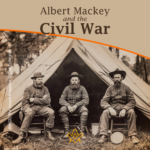 Albert Mackey and the Civil War In the midst of the Civil War's darkness, Dr. Albert G. Mackey, a devoted Freemason, shone a light of brotherhood and peace. Despite the nation's divide, Mackey tirelessly advocated for unity and compassion, embodying Freemasonry's highest ideals—fraternal love and mutual aid. His actions remind us that even in dire times, humanity's best qualities can prevail. |
 Discover the enduring bond of brotherhood at Lodge Dumfries Kilwinning No. 53, Scotland's oldest Masonic lodge with rich historical roots and cultural ties to poet Robert Burns. Experience rituals steeped in tradition, fostering unity and shared values, proving Freemasonry's timeless relevance in bridging cultural and global divides. Embrace the spirit of universal fraternity. |
 Discover the profound connections between John Ruskin's architectural philosophies and Freemasonry's symbolic principles. Delve into a world where craftsmanship, morality, and beauty intertwine, revealing timeless values that transcend individual ideas. Explore how these parallels enrich our understanding of cultural history, urging us to appreciate the deep impacts of architectural symbolism on society’s moral fabric. |
 Discover the incredible tale of the Taxil Hoax: a stunning testament to human gullibility. Unmasked by its mastermind, Leo Taxil, this elaborate scheme shook the world by fusing Freemasonry with diabolical plots, all crafted from lies. Dive into a story of deception that highlights our capacity for belief and the astonishing extents of our credulity. A reminder – question everything. |
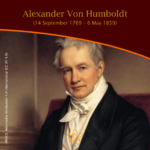 Dive into the extraordinary legacy of Alexander Von Humboldt, an intrepid explorer who defied boundaries to quench his insatiable thirst for knowledge. Embarking on a perilous five-year journey, Humboldt unveiled the Earth’s secrets, laying the foundation for modern conservationism. Discover his timeless impact on science and the spirit of exploration. |
 Voltaire - Freethinker and Freemason Discover the intriguing connection between the Enlightenment genius, Voltaire, and his association with Freemasonry in his final days. Unveil how his initiation into this secretive organization aligned with his lifelong pursuit of knowledge, civil liberties, and societal progress. Explore a captivating facet of Voltaire's remarkable legacy. |
 Robert Burns; But not as we know him A controversial subject but one that needs addressing. Robert Burns has not only been tarred with the presentism brush of being associated with slavery, but more scaldingly accused of being a rapist - a 'Weinstein sex pest' of his age. |
 Richard Parsons, 1st Earl of Rosse Discover the captivating story of Richard Parsons, 1st Earl of Rosse, the First Grand Master of Grand Lodge of Ireland, as we explore his rise to nobility, scandalous affiliations, and lasting legacy in 18th-century Irish history. Uncover the hidden secrets of this influential figure and delve into his intriguing associations and personal life. |
 James Gibbs St. Mary-Le-Strand Church Ricky Pound examines the mysterious carvings etched into the wall at St Mary-Le-Strand Church in the heart of London - are they just stonemasons' marks or a Freemason’s legacy? |
 Freemasonry and the Royal Family In the annals of British history, Freemasonry occupies a distinctive place. This centuries-old society, cloaked in symbolism and known for its masonic rituals, has intertwined with the British Royal Family in fascinating ways. The relationship between Freemasonry and the Royal Family is as complex as it is enduring, a melding of tradition, power, and mystery that continues to captivate the public imagination. |
 A Man Of High Ideals: Kenneth Wilson MA A biography of Kenneth Wilson, his life at Wellington College, and freemasonry in New Zealand by W. Bro Geoff Davies PGD and Rhys Davies |
 In 1786, intending to emigrate to Jamaica, Robert Burns wrote one of his finest poetical pieces – a poignant Farewell to Freemasonry that he wrote for his Brethren of St. James's Lodge, Tarbolton. |
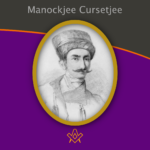 Alex Lishanin explores Mumbai and discovers the story of Lodge Rising Star of Western India and Manockjee Cursetjee – the first Indian to enter the Masonic Brotherhood of India. |
 Aleister Crowley - a very irregular Freemason Aleister Crowley, although made a Freemason in France, held a desire to be recognised as a 'regular' Freemason within the jurisdiction of UGLE – a goal that was never achieved. |
 Sir Joseph Banks – The botanical Freemason Banks was also the first Freemason to set foot in Australia, who was at the time, on a combined Royal Navy & Royal Society scientific expedition to the South Pacific Ocean on HMS Endeavour led by Captain James Cook. |
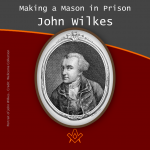 Making a Mason in Prison: the John Wilkes’ exception? |
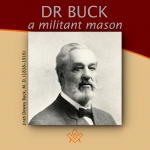 "To be a good man and true" is the first great lesson a man should learn, and over 40 years of being just that in example, Dr Buck won the right to lay down the precept. |
 Elias Ashmole: Masonic Hero or Scheming Chancer? The debate is on! Two eminent Masonic scholars go head to head: Yasha Beresiner proposes that Elias Ashmole was 'a Masonic hero', whereas Robert Lomas posits that Ashmole was a 'scheming chancer'. |
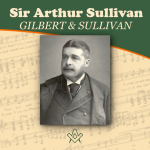 Sir Arthur Sullivan - A Masonic Composer We are all familiar with the comic operas of Gilbert and Sullivan, but did you know Sullivan was a Freemason, lets find out more…. |
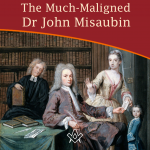 The Much-Maligned Dr John Misaubin The reputation of the Huguenot Freemason, has been buffeted by waves of criticism for the best part of three hundred years. |
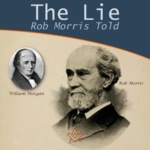 Was William Morgan really murdered by Masons in 1826? And what was the lie Masonic author Rob Morris told? Find out more in the intriguing story of 'The Morgan Affair'. |
 Lived Respected - Died Regretted Lived Respected - Died Regretted: a tribute to HRH The Prince Philip, Duke of Edinburgh |
 Who was Moses Jacob Ezekiel, a Freemason, American Civil War Soldier, renowned sculptor ? |
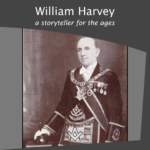 A Masonic author and Provincial Grand Master of Forfarshire in Scotland |
 Who was Philip, Duke of Wharton and was he Freemasonry’s Loose Cannon Ball ? |
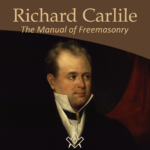 Richard Carlile - The Manual of Freemasonry Will the real author behind The Manual of Freemasonry please stand up! |
 Nicholas Hawksmoor – the ‘Devil’s Architect’ Nicholas Hawksmoor was one of the 18th century’s most prolific architects |
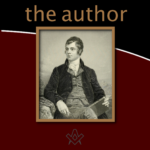 By Bro. Anthony Oneal Haye (1838-1877), Past Poet Laureate, Lodge Canongate Kilwinning No. 2, Edinburgh. |
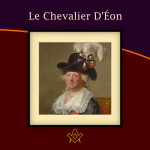 The Curious Case of the Chevalier d’Éon A cross-dressing author, diplomat, soldier and spy, the Le Chevalier D'Éon, a man who passed as a woman, became a legend in his own lifetime. |
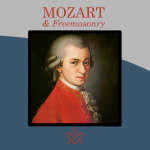 Mozart Freemasonry and The Magic Flute. Rev'd Dr Peter Mullen provides a historical view on the interesting topics |
masonic knowledge
to be a better citizen of the world
share the square with two brothers

click image to open email app on mobile device


